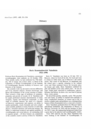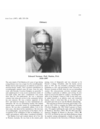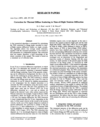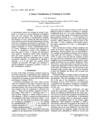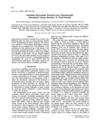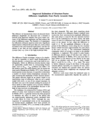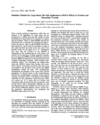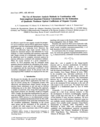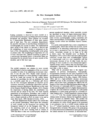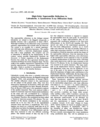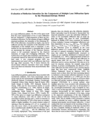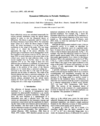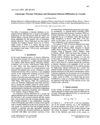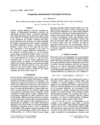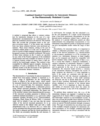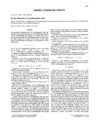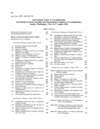issue contents
September 1997 issue

Cover illustration: A structural model of the decagonal Al-Pd-Mn quasicrystal, which consists of clusters represented by decagons and ten pentagons surrounding each decagon. This is obtained from a periodic structure in five-dimensional space by taking a three-dimensional section. Courtesy of A. Yamamoto.
obituaries
Free 

Free 

research papers
A numerical algorithm is described for calculating the TDS correction to Bragg peaks that are observed in time-of-flight neutron diffraction studies on single crystals.
Four different types of twinning in crystals are recognized, based on a tensor distinction of their properties and on a new and rigorous definition of prototype symmetry.
A new method for the determination of atomic moments fitted to theoretical or X–X experimental electrostatic potential is described. It is also shown that a reduced set of moments respecting local symmetry and chemical equivalence reproduces accurately V(r) and then can be used in force-field calculations.
A method is presented that improves the estimation of structure-factor difference amplitudes by using Bayesian statistics. The method is shown to give significant improvement for poor data and is straightforward to use.
Three different multislice formulations for large beam tilt are compared and evaluated. The tested multislice formulations are then applied to calculate higher-order Laue-zone reflections in non-orthogonal crystals.
This paper presents a rigorous theoretical framework for understanding X-ray scattering from dislocations. This theory is then applied to the specific case of screw dislocations.
Download citation


Download citation


Electron crystallography was combined with quantum-mechanical calculations in order to estimate quadratic nonlinear optical coefficients of two-dimensional organic molecules.
The scaling symmetry observed in the morphology of snow crystals is analysed on the basis of the point group of a multimetrical space group of ice.
High-resolution X-ray synchrotron radiation study of the supersatellites in the feldspar mineral labradorite. Data analysis shows a transverse displacement modulation with a large amplitude.
A maximum-entropy algorithm for deconvoluting intensities of multiple Laue diffraction spots is described. Test results have shown that this method is capable of producing high-quality data without the requirement of data redundancy.
Extra reflectivity curves, calculated numerically for various periodic multilayers using the optical-matrix method, are used to test the dynamical theory of diffraction.
General expressions are derived for the elastic and absorptive atomic scattering amplitudes and for the general case of anisotropic thermal parameters.
The application of normal probability methods to a comparison of structural parameters recently derived from independent X-ray and neutron diffraction refinement identifies systematically underestimated uncertainties in addition to significantly differing atomic displacement parameters that previously had been overlooked.
A method is proposed for the calculation of combined standard uncertainties for interatomic distances taking into account covariance terms involved by linear relations of symmetry constraints in one-dimensionally modulated crystals.
short communications
The uniformity characteristics R of crystallographic orbits are studied by the geometrical analysis of the fundamental regions for the corresponding space groups.
international union of crystallography
Free 



 journal menu
journal menu








